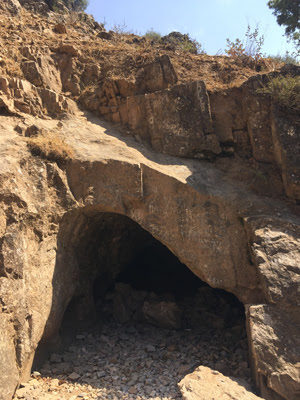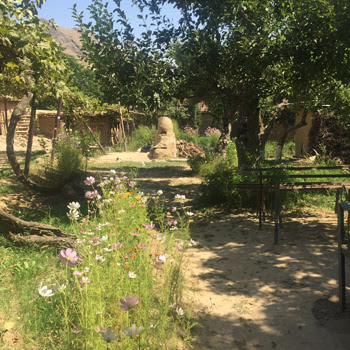 |
| Using the ancient forest pathways of Aman Kutan |
It is always rewarding to spend time in Uzbek villages. And not far from Samarkand's famed turquoise domes, it is possible to hike through a beautiful forest and enjoy a village home stay.
Overview of Aman Kutan region
About 45 kms east of Samarkand, on the road to Timur's home town of Shakrisabs, lies the very pretty Aman Kutan valley, dotted with small settlements.
The area is perfect for a day hike, an enjoyable lunch stop after a visit to Shakrisabs or an overnight village home stay.
Since ancient times this region has played a major role in the life of Samarkand. It was the only road connecting the Surkhandarya oasis with the Zarafshan river valley, i.e. the shortest path from ancient Bactria to Sogdiana (the ancient name for Samarkand).
The armies of Alexander the Great, Genghis Khan and the Persians all marched across this way. Later this route formed a section of the Great Silk Road with considerable economic and cultural importance.
 |
| Terraces in the forests of Aman Kutan |
In autumn 1879 thousands of seedlings were planted. The main species were black locust, American ash, walnut, mulberry, Crimean pine, apricot and almond. Later, trees were planted on horizontal terraces designed by N.I. Korolkov. As well as preventing soil flows, long-living walnuts produce an important crop for locals to harvest and sell.
Several of the original trees still stand and local families keenly monitor the forests to ensure that no illegal felling occurs. The Aman Kutan forest area covers 2158 hectares today.
Archaeological findings
David Natanovich Lev was the leading investigator of the Stone Age in Central Asia, and a professor at the University of Samarkand. In 1947, his expedition discovered many ancient tools and the remains of a young Neanderthal man. These were dated roughly to 100,000 to 40,000 years ago, and are the earliest known human remains in Central Asia.
 |
| Entrance to Lion's Cave, Aman Kutan |
Hiking
It is possible to arrange a one or two day hike in the area, with picnic lunches and home cooking.
Particualrly in summer, Aman Kutan's cooler climate - usually about 8 degrees Celsius less than Samarkand - is ideal for hiking.
Accompanied by a guide, you can hike through the forest, enjoying the seasonal flora. The guide will also point out where the 19th century Russian barracks were and other remnants of the afforestation team's work.
After inspecting the Lion's Cave you can picnic nearby then head back to Aman Kutan village via the old Soviet pioneer camp. Alternatively, you can make a bigger loop by hiking through the pass and back to the village.
Either way, the scenery is spectacular and the history interesting. After your hike, you can enjoy a delicious meal on a tapchan under the trees, listening to the river and rustle of leaves.
 | |
| View of the garden and tandyr oven at the home stay |
The family can send you itineraries as well as Google Earth coordinates for the region.

Related posts:
Katta Langar's Masterpieces of Islamic Architecture - Near Shakhrisabz
Uzbekistan - A Rural Homestay in Hayat, the Nurata Mountains
Uzbekistan: Pearl of the Sands - a New Documentary
Materials source: Man-made Green Monuments of Central Asia